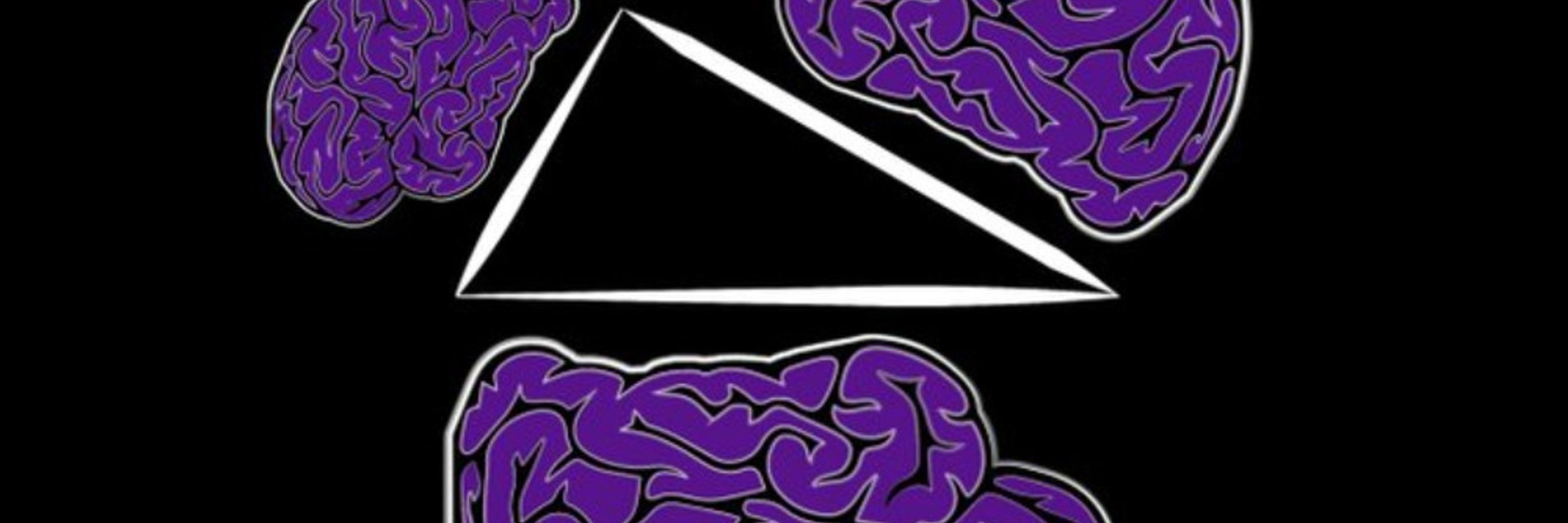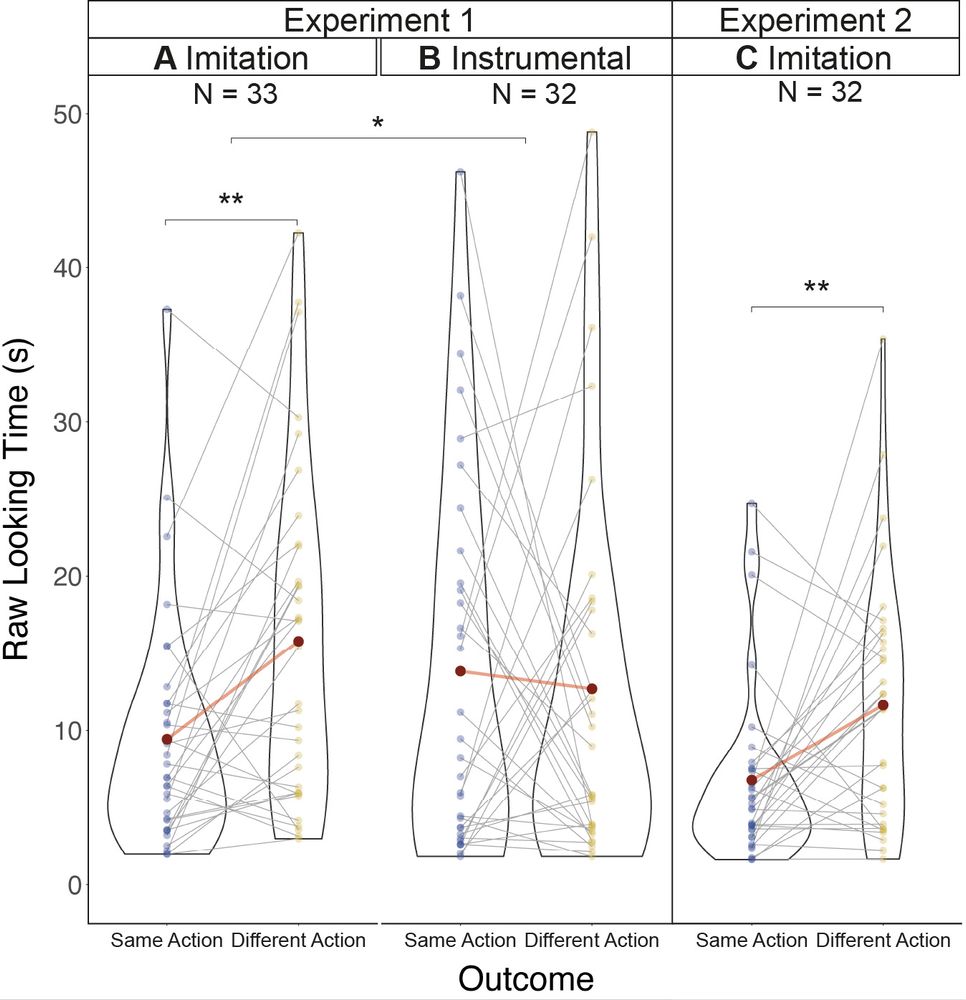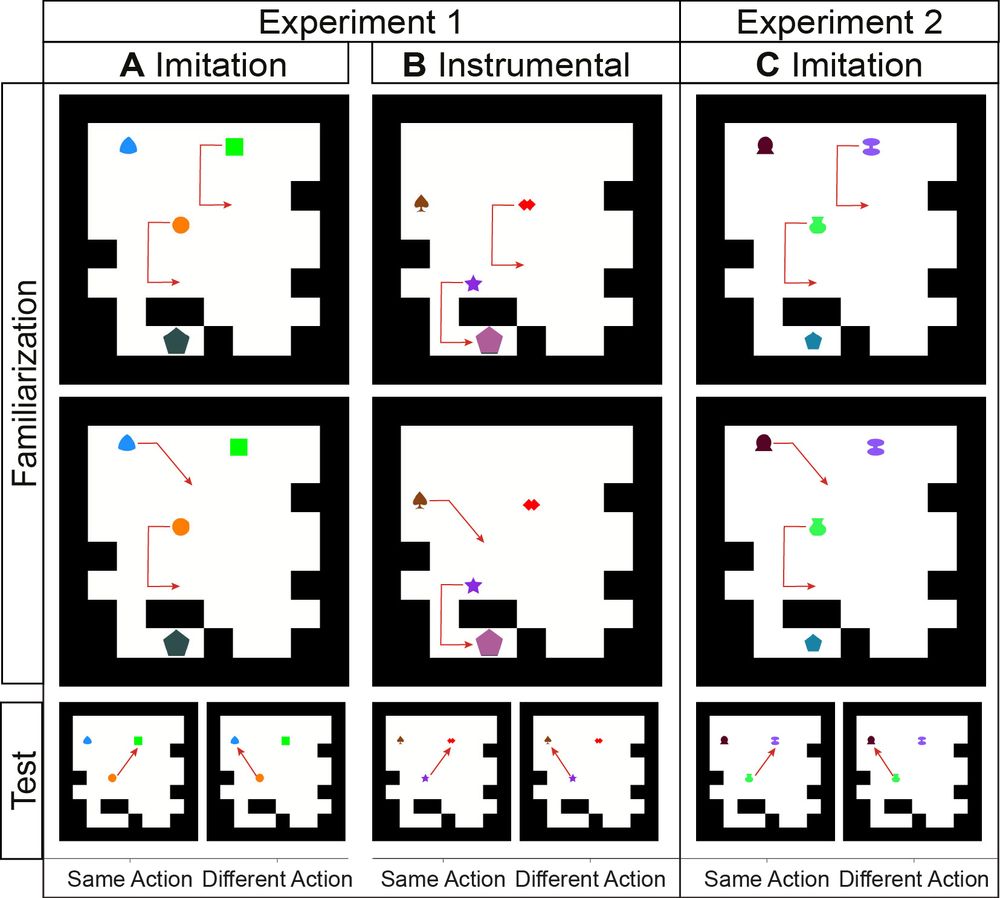
Moira (Molly) Dillon
@moiradillon.bsky.social
Assistant Professor at NYU Psychology 👩🔬 🧠 investigating the origins and development of abstract thought
Congratulations 🎉 to Shannon, for whom this is her first, first-author paper 📕, and to Deisy, who was an ICIS Founding Generation Fellow in the lab and then our lab manager 👩💻! Finally, thank you to the NSF and DARPA for funding our work and to all of the families 👩👦 who volunteered to participate!
February 6, 2025 at 4:36 PM
Congratulations 🎉 to Shannon, for whom this is her first, first-author paper 📕, and to Deisy, who was an ICIS Founding Generation Fellow in the lab and then our lab manager 👩💻! Finally, thank you to the NSF and DARPA for funding our work and to all of the families 👩👦 who volunteered to participate!
A systematic evaluation of a set of scenarios like these is possible and promises to inform our understanding of the foundational knowledge on which human social learning is built 👩🏫, as well as to aid the building of human-like artificial intelligence 🤖.
February 6, 2025 at 4:36 PM
A systematic evaluation of a set of scenarios like these is possible and promises to inform our understanding of the foundational knowledge on which human social learning is built 👩🏫, as well as to aid the building of human-like artificial intelligence 🤖.
Infants expected an imitating agent to approach a target agent only when the imitator did not also have an object goal. Infants’ attribution of social value to imitation only in the absence of such intentional cues may be a signature of humans’ early understanding of imitation.

February 6, 2025 at 4:36 PM
Infants expected an imitating agent to approach a target agent only when the imitator did not also have an object goal. Infants’ attribution of social value to imitation only in the absence of such intentional cues may be a signature of humans’ early understanding of imitation.
We used highly minimal, procedurally generated displays to challenge infants' capacities for abstraction and to tightly match the displays across conditions. These displays can also be easily adapted to test computational models 💻 (keep an eye out for our future work!).

February 6, 2025 at 4:36 PM
We used highly minimal, procedurally generated displays to challenge infants' capacities for abstraction and to tightly match the displays across conditions. These displays can also be easily adapted to test computational models 💻 (keep an eye out for our future work!).
To do so, we tested 15-month-olds' expectations about whether an imitator would approach the agent it imitated when that imitation occurred in the presence vs. absence of intentional cues like obstacles, object goals, and efficient, causally effective action.
February 6, 2025 at 4:36 PM
To do so, we tested 15-month-olds' expectations about whether an imitator would approach the agent it imitated when that imitation occurred in the presence vs. absence of intentional cues like obstacles, object goals, and efficient, causally effective action.
From early in development, humans use imitation to express social engagement, to understand social affiliations, and to learn from others. 👯♀️ In this paper, we asked what cues infants 👶 might use to infer that a social goal is driving an act of imitation.
February 6, 2025 at 4:36 PM
From early in development, humans use imitation to express social engagement, to understand social affiliations, and to learn from others. 👯♀️ In this paper, we asked what cues infants 👶 might use to infer that a social goal is driving an act of imitation.
And for anyone who might be interested, there is an open call for the Editorial Fellowship Program across several APS journals (due date, Feb. 7)!

APS Editorial Fellowship Program: Call for Applications
Deadline: February 7, 2025APS is pleased to announce the application process for the next cohort of the Editorial Fellowship Program (EFP) is now open. This program aims to increase opportunities for ...
www.psychologicalscience.org
January 13, 2025 at 1:16 PM
And for anyone who might be interested, there is an open call for the Editorial Fellowship Program across several APS journals (due date, Feb. 7)!
Great! Please add me as well, thanks!
December 19, 2024 at 12:17 PM
Great! Please add me as well, thanks!
Thanks to the National Science Foundation, @ldm-nyu.bsky.social, and the participating families! 🚸
August 26, 2024 at 5:19 PM
Thanks to the National Science Foundation, @ldm-nyu.bsky.social, and the participating families! 🚸
These results expand the symbolic scope of prior studies on object biases in drawing 🖼️ to object biases in language 💬 (see psycnet.apa.org/buy/2020-807...), and they expand the spatial domains of prior studies characterizing the language of objects and places.
APA PsycNet
psycnet.apa.org
August 26, 2024 at 5:18 PM
These results expand the symbolic scope of prior studies on object biases in drawing 🖼️ to object biases in language 💬 (see psycnet.apa.org/buy/2020-807...), and they expand the spatial domains of prior studies characterizing the language of objects and places.
Spatial domain may thus confer specific and foundational biases for word learning that may change through development in a way that is similar to that of other word-learning biases about objects, like the shape bias.
August 26, 2024 at 5:17 PM
Spatial domain may thus confer specific and foundational biases for word learning that may change through development in a way that is similar to that of other word-learning biases about objects, like the shape bias.
While adults showed a specific object-over-place bias in both extending novel noun labels and matching, they did not show this bias in extending novel nouns following prepositions. Young children showed this bias in extending novel noun labels only.
August 26, 2024 at 5:17 PM
While adults showed a specific object-over-place bias in both extending novel noun labels and matching, they did not show this bias in extending novel nouns following prepositions. Young children showed this bias in extending novel noun labels only.
We predicted that participants would think a novel noun label referred to object over place information. 🤔 In the place condition, this would mean the block in the front of the scene, but in the object condition, this would mean either the container or the block inside of it.
August 26, 2024 at 5:17 PM
We predicted that participants would think a novel noun label referred to object over place information. 🤔 In the place condition, this would mean the block in the front of the scene, but in the object condition, this would mean either the container or the block inside of it.
To dissociate specific object and place information from more general figure and ground information, moreover, participants either saw scenes with both place information (a room) and object information (a block in the room), or scenes with two kinds of object information.

August 26, 2024 at 5:17 PM
To dissociate specific object and place information from more general figure and ground information, moreover, participants either saw scenes with both place information (a room) and object information (a block in the room), or scenes with two kinds of object information.
Critically, our "places" were navigable 🌄🏙️🏜️, not just locations on objects, a definition of place used in prior studies.
August 26, 2024 at 5:17 PM
Critically, our "places" were navigable 🌄🏙️🏜️, not just locations on objects, a definition of place used in prior studies.
Across six experiments, adults and 3- and 4-year-old children were asked either to extend a novel noun in a labeling phrase, to extend a novel noun in a prepositional phrase, or to simply match pictures. They were assigned to either an object or place condition.
August 26, 2024 at 5:16 PM
Across six experiments, adults and 3- and 4-year-old children were asked either to extend a novel noun in a labeling phrase, to extend a novel noun in a prepositional phrase, or to simply match pictures. They were assigned to either an object or place condition.

